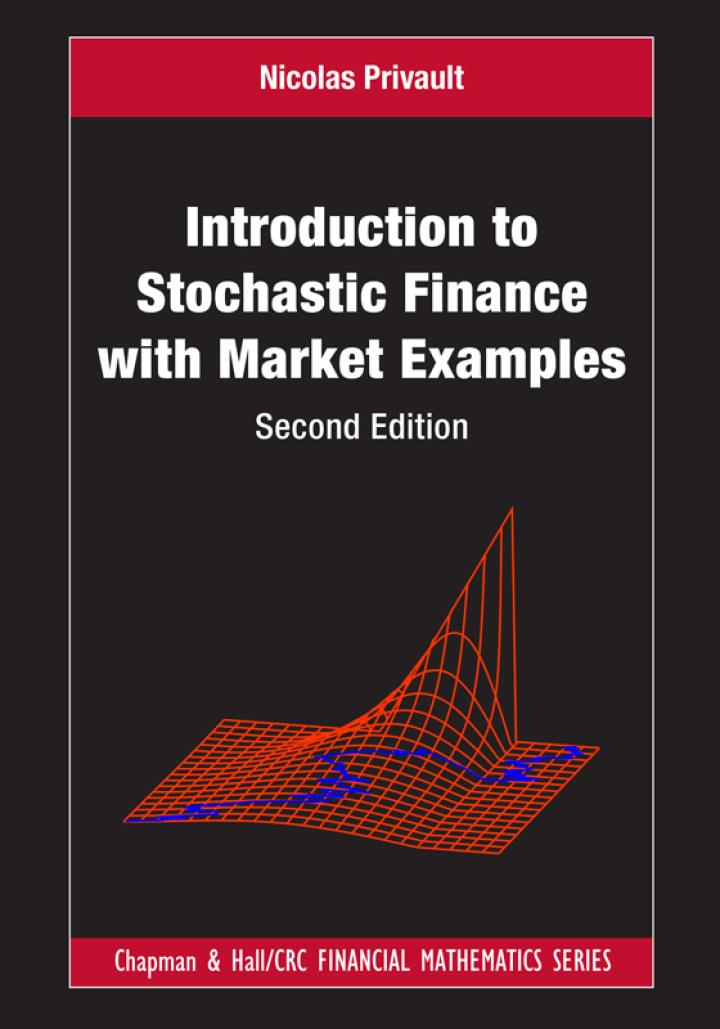Let (left(B_{t}ight)_{t in mathbb{R}_{+}})be a standard Brownian motion started at 0 , i.e. (B_{0}=0). a) Is the
Question:
Let \(\left(B_{t}ight)_{t \in \mathbb{R}_{+}}\)be a standard Brownian motion started at 0 , i.e. \(B_{0}=0\).
a) Is the process \(t \longmapsto\left(2-B_{t}ight)^{+}\)a submartingale, a martingale or a supermartingale?
b) Is the process \(\left(\mathrm{e}^{B_{t}}ight)_{t \in \mathbb{R}_{+}}\)a submartingale, a martingale, or a supermartingale?
c) Consider the random time \(u\) defined by
\[u:=\inf \left\{t \in \mathbb{R}_{+}: B_{t}=B_{2 t}ight\}\]
which represents the first intersection time of the curves \(\left(B_{t}ight)_{t \in \mathbb{R}_{+}}\)and \(\left(B_{2 t}ight)_{t \in \mathbb{R}_{+}}\).
Is \(u\) a stopping time?
d) Consider the random time \(\tau\) defined by
\[\tau:=\inf \left\{t \in \mathbb{R}_{+}: \mathrm{e}^{B_{t}-t / 2}=\alpha+\beta tight\}\]
which represents the first time geometric Brownian motion \(\mathrm{e}^{B_{t}-t / 2}\) crosses the straight line \(t \longmapsto \alpha+\beta t\). Is \(\tau\) a stopping time?
e) If \(\tau\) is a stopping time, compute \(\mathbb{E}[\tau]\) by the Doob Stopping Time Theorem 14.7 in each of the following two cases:
i) \(\alpha>1\) and \(\beta<0\), ii) \(\alpha<1\) and \(\beta>0\).
Step by Step Answer:

Introduction To Stochastic Finance With Market Examples
ISBN: 9781032288277
2nd Edition
Authors: Nicolas Privault





